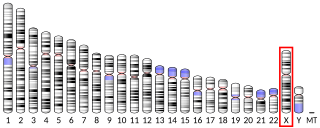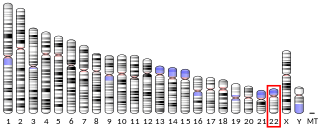
The interleukin-1 receptor antagonist protein (IL-1RN) is a protein that in humans is encoded by the IL1RN gene.

Lymphotoxin beta receptor (LTBR), also known as tumor necrosis factor receptor superfamily member 3 (TNFRSF3), is a cell surface receptor for lymphotoxin involved in apoptosis and cytokine release. It is a member of the tumor necrosis factor receptor superfamily.

Signal transducer and activator of transcription 6 (STAT6) is a transcription factor that belongs to the Signal Transducer and Activator of Transcription (STAT) family of proteins. The proteins of STAT family transmit signals from a receptor complex to the nucleus and activate gene expression. Similarly as other STAT family proteins, STAT6 is also activated by growth factors and cytokines. STAT6 is mainly activated by cytokines interleukin-4 and interleukin-13.

Interleukin 1 receptor, type II (IL-1R2) also known as CD121b is an interleukin receptor. IL1R2 also denotes its human gene.

Interleukin 1 receptor, type I (IL1R1) also known as CD121a, is an interleukin receptor. IL1R1 also denotes its human gene.

Interleukin-12 receptor, beta 1, or IL-12Rβ1 in short, is a subunit of the interleukin 12 receptor and the interleukin 23 receptor. IL12RB1, is the name of its human gene. IL-12Rβ1 is also known as CD212.

Interleukin 36 receptor antagonist (IL-36RA) is a member of the interleukin-36 family of cytokines. It was previously named Interleukin-1 family member 5 (IL1F5).

Interleukin 9 receptor (IL9R) also known as CD129 is a type I cytokine receptor. IL9R also denotes its human gene.

Interleukin 10 receptor, beta subunit is a subunit for the interleukin-10 receptor. IL10RB is its human gene.

Interleukin 37 (IL-37), also known as Interleukin-1 family member 7 (IL-1F7), is an anti-inflammatory cytokine important for the downregulation of pro-inflammatory cytokine production as well as the suppression of tumor cell growth.

Interleukin 11 receptor, alpha subunit is a subunit of the interleukin 11 receptor. IL11RA is its human gene.

Interleukin-36 gamma previously known as interleukin-1 family member 9 (IL1F9) is a protein that in humans is encoded by the IL36G gene.

Interleukin-36 alpha also known as interleukin-1 family member 6 (IL1F6) is a protein that in humans is encoded by the IL36A gene.

Interleukin 17 receptor A, also known as IL17RA and CDw217, is a human gene.

Interleukin-36 beta also known as interleukin-1 family member 8 (IL1F8) is a protein that in humans is encoded by the IL36B gene.

Cysteine and glycine-rich protein 2 is a protein that in humans is encoded by the CSRP2 gene.

Interleukin-1 receptor-like 2 is a protein that in humans is encoded by the IL1RL2 gene.

The interleukin-18 receptor 1 (IL-18R1) is an interleukin receptor of the immunoglobulin superfamily. IL18R1 is its human gene. IL18R1 is also known as CDw218a.

X-linked interleukin-1 receptor accessory protein-like 2 is a protein that in humans is encoded by the IL1RAPL2 gene.

Interleukin 1 receptor-like 1, also known as IL1RL1 and ST2, is a protein that in humans is encoded by the IL1RL1 gene.
















